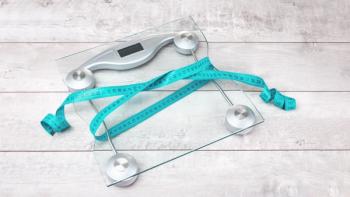The market for bone health dietary supplements is strengthening in response to growing consumer concerns about aging. One recent report by Mordor Intelligence predicts the bone health market will increase at a 6.3% CAGR through 2026.1
Postmenopausal and aging women are among the highest at-risk groups likely to experience bone loss and therefore represent a key target in the bone health supplements market.2 As the population ages and more women begin prioritizing their bone health, scientifically validated bone health formulations will gain their attention. Supplement marketers and nutrition researchers are learning more about the many ways nutrients can support aging bones—and advancing their products accordingly.
The Gut-Bone Connection
One recent discovery has opened up new opportunities in bone health—for gut health ingredients, that is. In fact, new studies have found that the gut microbiota can influence bone health, says Titti Niskanen, PhD, director of R&D and clinical operations for probiotics supplier Probi (Lund, Sweden). This discovery has led to the emergence of a new field of research: osteomicrobiology.
“Although the exact mechanism explaining the bacterial role in this health area is not clearly elucidated, there are various pathways suggested for how probiotics and gut bacteria may affect bone homeostasis and bone metabolism,” Niskanen says. “The overall hypothesis involves the activation or downregulation of osteoclasts, the cells that are responsible for bone resorption. Probiotics are believed to reduce the activation of cells involved in the inflammatory response that leads to activation of the osteoclasts.”
One randomized, double-blind, placebo-controlled, multicenter trial3 funded by Probi examined the efficacy of probiotics on lumbar spine bone mineral density in 232 postmenopausal women aged 45 to 70. The subjects were randomly assigned to receive either Probi’s branded Osteo product, which is a probiotic supplement containing a 10 billion–colony-forming unit (CFU) combination of L. paracasei, L. plantarum 15312, and L. plantarum 15313 (n = 116), or a placebo (n = 116), once daily for 12 months. The subjects were assessed for lumbar spine bone mineral density at baseline and at the study’s conclusion.
The control group exhibited an average bone loss of 0.72% over the course of the study. The Probi group experienced 0.01% bone loss. The researchers concluded that this mix of three Lactobacillus strains may help prevent bone loss in postmenopausal women.
Niskanen, who was one of the authors of this study, says Probi is now working on a new trial to investigate the effects of Probi Osteo on bone metabolism, microarchitecture, and density. Probi is also developing more product formats for Osteo and has already launched a powder and a shot formulation.
Pilot Study Explores Veganism and Bone Health
Are vegans at higher risk of bone fractures than omnivores? That’s the question posed by a recent cross-sectional observational pilot study6 on healthy adults aged 32 to 46.
The subjects had been following either a vegan diet (n = 36) or an omnivorous diet (n = 36) for at least one year and were assessed for bone mineral density via calcaneal quantitative ultrasound, plus blood and urine concentrations of nutrients like calcium and vitamin K1.
The vegan group had lower levels of calcium, lysine, zinc, and vitamins A and B2, while the omnivore group had lower levels of vitamin K1, folate, and glutamine.Kriti Chaudhary, head of business development for Vedic Lifesciences (Mumbai, India), says this pilot study warrants further research on whether veganism affects bone health.
Delivery Systems Diversify; Blends Grow
Legacy ingredients like calcium, magnesium, and vitamin D still dominate bone health shelves, but newer ingredients are creating market disruption. Michael A. Smith, MD, director of education for supplements company Life Extension (Ford Lauderdale, FL), says emerging consumer awareness around vitamin K2 is opening up opportunities for synergistic bone health blends.
“While vitamin K2 may not be new to bone health, this ingredient is still emerging for the general consumer,” Smith says. “Vitamin K2 has been shown to be essential for bone mineralization because it’s a cofactor for the carboxylation of osteocalcin. Clinical studies have shown that when you combine vitamin K with vitamin D3 and calcium, there’s a significant increase in bone mass density.”
One 2014 literature review of 11 randomized clinical trials4 examined the effects of menatetrenone, a synthetic ingredient that is bioidentical to menaquinone-4 (a form of vitamin K2), on bone mineral density, incidence of bone fracture, and serum undercarboxylated osteocalcin concentrations in postmenopausal women with osteoporosis. Seven of the trials assessed the effects of menatetrenone on bone mineral density, and four assessed the effects of menatetrenone on incidence of vertebral fracture. While the review author cautions that the trials had small sample sizes, the review concluded that menatetrenone decreases serum concentrations of undercarboxylated osteocalcin, increases lumbar spine bone mineral density, and reduces the incidence of fractures in postmenopausal women with osteopenia or osteoporosis.
In December 2020, Life Extension launched Bone Restore Elite with Super Potent K2, a blend of menaquinone-4, calcium, vitamin D3, and trace minerals, including magnesium, zinc, manganese, boron, and silicon. “While calcium still holds the largest ingredient market share for bone health, ingredients like vitamin D and magnesium are expected to see modest market growth through 2024,” Smith notes. “The benefits of vitamin K2 are becoming more well known for bone health, so I think we will start to see more products with vitamin K2 combined with traditional bone health ingredients.”
Bone health products are expanding to newer formats, says Smith. Capsules are still the main delivery system, but products like gummies and ready-to-drink (RTD) beverages are also hitting the bone health market.
Resveratrol Improves Bone Mineral Density
In July 2020, Evolva (Reinach, Switzerland) announced the second in a series of publications from the Resveratrol Supporting Healthy Aging in Women (RESHAW) clinical study.7 This randomized, double-blind, placebo-controlled crossover trial assessed the effects of two 75-mg capsules per day of Evolva’s Veri-te brand of resveratrol (n = 63) versus placebo (n = 65) on cognitive and cerebrovascular function, bone health, and cardiometabolic health in postmenopausal women over the course of two years.
The study, which received supplementary funding from Evolva, found that resveratrol consumption increased bone mineral density, decreased plasma C-telopeptide (CTx) in CTx testing, and reduced the 10-year probability of major osteoporotic fractures, including hip fractures. Resveratrol was found to act synergistically with vitamin D and calcium to protect bone health.
Vitamin K2 Provides Dual-Action Calcium Regulation
Trygve Bergeland, PhD, vice president of science for Kappa Bioscience AS (Oslo, Norway), says that within the next two years, the number of dietary supplement consumers actively seeking out vitamin K2 will double from 8% to 16%. The COVID-19 pandemic could inspire further growing demand for bone health supplements driven by increased interest in immune health products, Bergeland says.
“Brands increasingly understand via the immune health product development process the value of a combination of vitamins D3 and K2 for the multiple applications of D3,” Bergeland says. “Of course, the focus here is on immune health, but consequently, we expect a renaissance of vitamin K2 for bone health over the next two years.”
Vitamin K2 works synergistically with vitamin D to both improve bone health and also to reduce cardiovascular risks, Bergeland explains. Vitamin D increases calcium absorption, and vitamin K2 ensures calcium will be incorporated into the bone matrix rather than remaining in the bloodstream. While studies have shown supplementation with either vitamin D or vitamin K2 will limit bone loss in postmenopausal women, pairing the two vitamins together will go beyond limiting bone loss to increase bone mineral density, Bergeland says. “Vitamin K2 is a necessary cofactor for activation of matrix Gla protein (MGP), a calcium-binding protein. When activated, MGP binds excess calcium in the blood and prevents it from being deposited in arteries. Vitamin K2 ensures calcium will reach the bones.”
Vitamin K2’s second mechanism of action involves activating osteocalcin. Fully activated osteocalcin will bind to free-floating calcium in the blood and transport it to the bone matrix, ensuring the maximum amount of free calcium is devoted to building bones, Bergeland says. In fact, in May 2020, Kappa Bioscience launched a new educational program explaining the synergistic relationship between vitamins D3 and K2.
Space: The Next Frontier?
In 2020, the Canadian Space Agency (Saint-Hubert, Canada) and the University of Calgary (Calgary, Canada) concluded a five-year study8 on the effects of outer space travel on bone health. The TBone study observed 17 astronauts who underwent wrist and ankle imaging before and after their mission. The astronauts supplied blood and urine samples throughout the mission and provided information regarding their diet and exercise regimen as well as their supplements and medications. The study found that astronauts experience 20 years’ worth of bone loss during a six-month space mission.
Companies like SpaceX, Blue Origin, and Space Adventures have either already sent private citizens into space or will do so before the end of 2021. While the spacefaring market for bone health supplements is a very small one, the need nonetheless exists. Could this be an interesting novelty market, or an opportunity for a committed bone health brand to partner with a space agency and run a “Good Enough for Astronauts” influencer campaign?
What About Younger Women?
Postmenopausal women may be the primary buyer of bone health supplements, but ongoing research is demonstrating that younger women in their 30s and 40s can also benefit from bone health ingredients.
A recent randomized, double-blind, placebo-controlled clinical trial5 investigated the effects of a protein powder fortified with bone health ingredients on carboxylated and undercarboxylated osteocalcin, bone alkaline phosphatase, urinary calcium-to-creatine ratio, and other biomarkers of bone health in healthy Indian women between the ages of 25 and 45. The subjects were randomly assigned to receive either two 30-g servings of a high-protein nutritional powder dissolved in 200 ml of water (n=52), or a placebo (n=50), daily for six months. The two 30-g servings of nutritional powder combined contained 400 IU of vitamin D2, 9 g of protein, 55 mcg of vitamin K2, 600 mg of calcium, and a variety of other nutrients. The placebo was a low-protein drink powder with 47 g of carbohydrates, 10.8 g of sugar, 3 g of protein, and no vitamins or minerals per daily serving.
After six months, the test group exhibited a 53% increase in carboxylated and undercarboxylated osteocalcin (c-OC/uc-OC) and a 33% decrease in serum C-telopeptide CTx (s-CTX-1). The control group’s mean c-OC/uc-OC concentration increased by 45% from baseline, and s-CTX-1 decreased 23% from baseline. The between-group difference in osteocalcin ratios was found to be statistically significant (p < 0.05) after three months, but not after six months.
Kriti Chaudhary, head of business development for contract research organization Vedic Lifesciences (Mumbai, India), says this trial shows that micronutrient-fortified drinks hold promise for improved bone health among young women.
“Young Indian women may be at risk of poor bone health due to malnutrition,” Chaudhary says. “This trial showed favorable changes in bone turnover markers and calcium homeostasis. Such changes in older adults have been associated with slower bone loss and reduced fracture risk.”
From Strength to Strength
Bone health ingredients are expected to thrive as aging, health-conscious consumers look for ways to reduce fracture risk and maintain bone density. With more choices than ever, consumers could move farther away from calcium-only products and seek out more complex formulas in diverse formats. The next opportunities in bone health will be for innovative blends that come in convenient formats like gummies or RTD beverages.
References
- Mordor Intelligence report. “Bone and Joint Health Ingredients Market – Growth, Trends, COVID-19 Impact, and Forecasts (2021-2026).” Published online April 25, 2019.
- National Osteoporosis Foundation website. “What Women Need to Know.”
- Jansson PA et al. “Probiotic treatment using a mix of three Lactobacillus strains for lumbar spine bone loss in postmenopausal women: A randomised, double-blind, placebo-controlled, multicentre trial.” The Lancet Rheumatology, vol. 1, no. 3 (November 1, 2019): E154-E162
- Iwamoto J. “Vitamin K2 therapy for postmenopausal osteoporosis.” Nutrients, vol. 6, no. 5 (May 16, 2014): 1971-1980
- Umarji PB et al. “Randomised controlled trial of nutritional supplement on bone turnover markers in Indian premenopausal women.” Nutrients, vol. 13, no. 2 (January 26, 2021): 364
- Menzel J et al. “Vegan diet and bone health – Results from the cross-sectional RBVD study.” Nutrients, vol. 13, no. 2 (February 21, 2021): 685
- Wong RHX et al. “Regular supplementation with resveratrol improves bone mineral density in postmenopausal women: A randomized, placebo-controlled trial.” Journal of Bone and Mineral Research, vol. 35, no. 11 (November 2020): 2121-2131
- Canadian Space Agency website. “TBone: Effects of Microgravity on Bones.” Updated online March 16, 2021.






